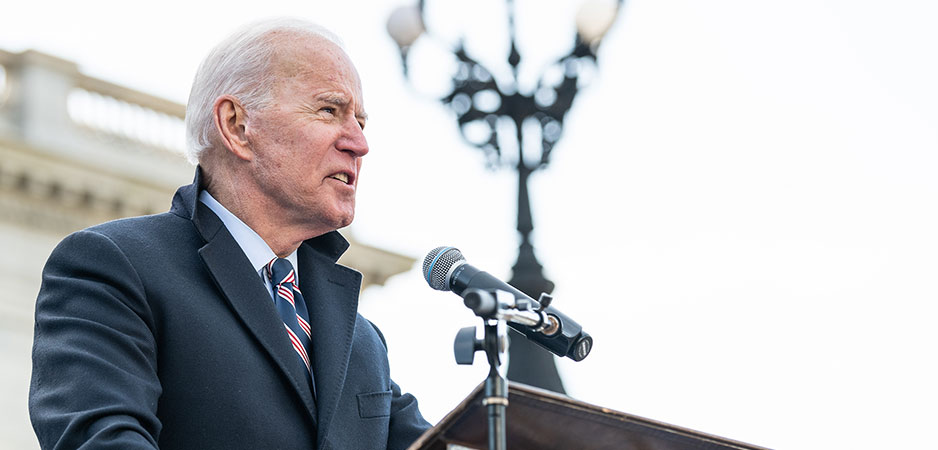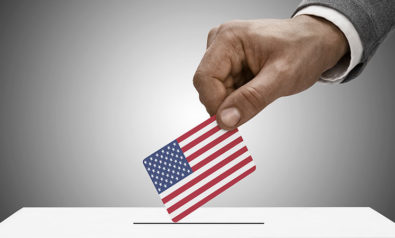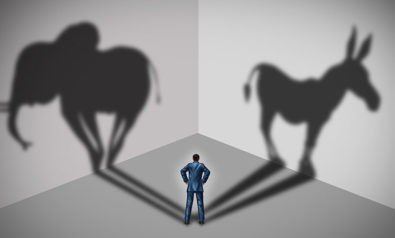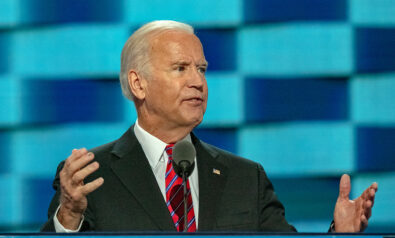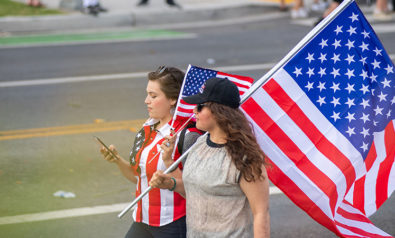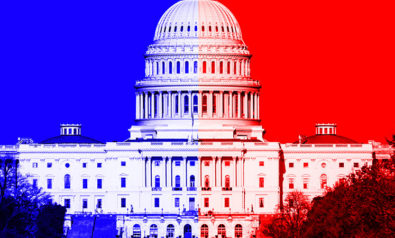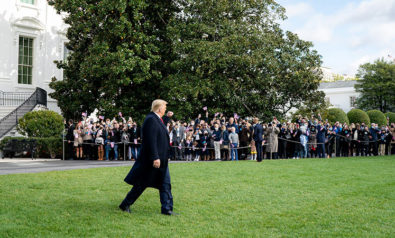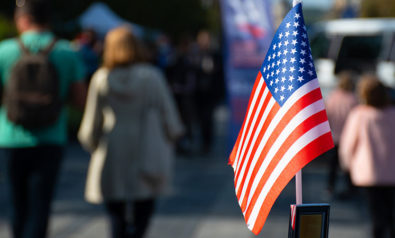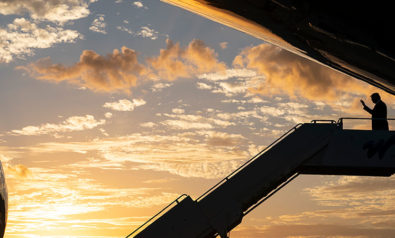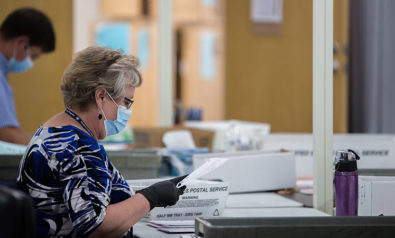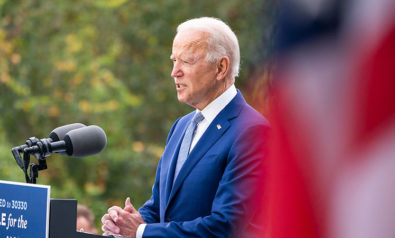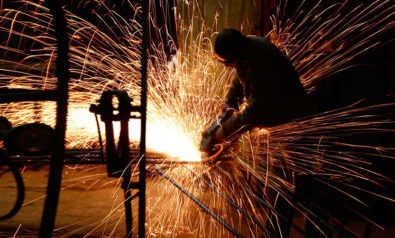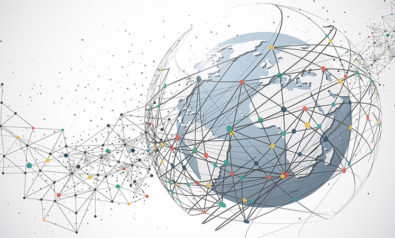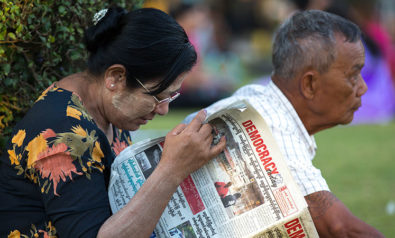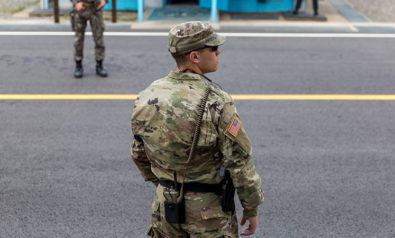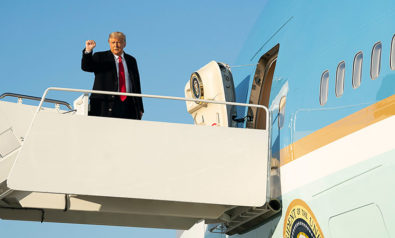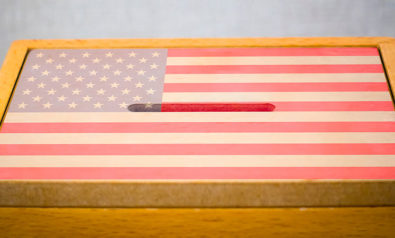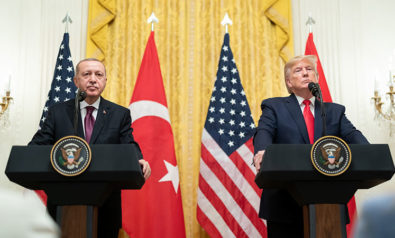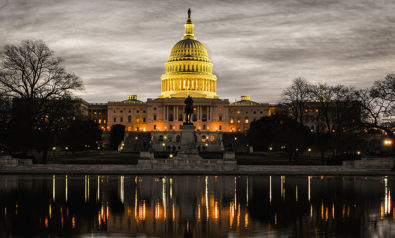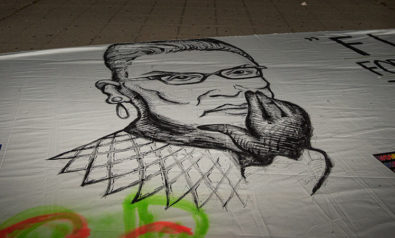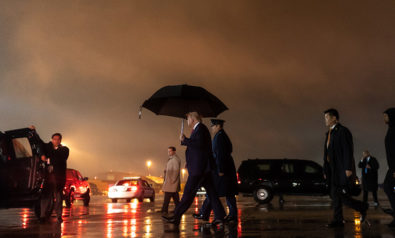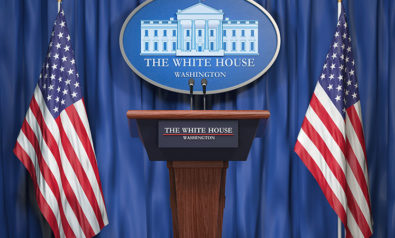After four days of agonizing vote tabulations, interminable political commentary, overwrought election dissection and national public angst, Joe Biden has been declared the winner of the 2020 election as America’s next president. Biden partisans are entitled to some celebration. It was a hard-fought win against what seemed like impossible odds at the beginning of the year. But the politician who began his public life 50 years ago as a Wilmington, Delaware, councilman will now take on the biggest challenge of his life and of the nation he will lead.
First, however, it’s important to call attention to all the things that went well for America this last week. And they’re vitally important for Americans — and non-Americans, too — to understand and appreciate as the nation and its new president invest themselves in this herculean challenge ahead.
360˚ Context: The 2020 US Election Explained
For all the Sturm und Drang in the lead-up to the election, voting came off largely without a hitch. All voters who came to vote were able to do so. In most cases, waiting times were mercifully brief. Waiting tended to occur more frequently during the early voting. Those voters deserve their country’s respect and gratitude for their patience, persistence and commitment to the democratic process. Despite plenty of hiccups in primary voting that took place earlier in the year, national election day procedures and systems performed just as they were supposed to do. Early voting as well as mail-in and absentee voting, occurring in many states for the first time to minimize the dangers of COVID-19, also proceeded with few problems.
Delays in ballot tabulation occurred in states like Pennsylvania, Georgia, Nevada and elsewhere largely because Republican-controlled legislatures prohibited starting the counting process until November 3 — voting day. In the end, that may have redounded against them and President Donald Trump. Also, to minimize voters’ exposure to COVID-19, many states were using mail-in voting and same-day voter registration for the first time, accounting for further delays.
Vox Populi
The success of the process was bolstered throughout the nation by competent election administrators and effective election systems, manned by armies of conscientious volunteers, Republicans, Democrats and independents. Donald Trump’s predictable, sore-loser accusations of fraud and manipulation are specious and groundless. His legal claims will likely go nowhere.
Furthermore, fears of violence or public unrest at polling places or in cities never really materialized, from either the left or the right. There were few, if any, reports of voter intimidation. The American people seemed to understand that this most sacred and honored element of their much-bruised democracy was off-limits. It was their chance to express their views, wishes and wants in the most forceful and effective way possible in a democracy.
The world may also take heart in the level of participation in this election. The voter participation rate — expected to reach nearly two-thirds of the population eligible to vote once all ballots are counted – will exceed the previous high of 65.7% set in the 1908 elections. In my home state of Colorado, voter turnout will reach an astounding 85%, the highest in the nation and the highest ever of any US state in modern election history.
It may be fair to credit Donald Trump for wresting American voters from their traditional election lethargy. He unquestionably stirred deep and strong sentiments among supporters and critics alike. They responded as they should in a democratic society — by going to the polls. For America, vox populi prevailed.
There is a related benefit to the increased voter turnout. It would be hard to find a period in recent US history when so many Americans took such a strong interest in public affairs. One could hardly go to the supermarket, walk through a parking garage, take a stroll through the neighborhood or sit in a classroom or office — at least those still functioning under COVID-19 restrictions — without hearing people talk about the political issues and the election. Political conversations — whether online, on social media, TV, radio, print or at the kitchen table — dominated like never before. Animated and even stressful at times, these are nevertheless heartening. It is essential that this communication take place in order to keep a democracy vibrant and innervated. An engaged citizenry makes for a stronger democracy.
Finally, the much-feared tampering by outside “influencers” also failed to materialize, though not from want of trying. Federal, state and local agencies and authorities did in fact come together to ensure that these elections were largely interference-free and that the results do indeed reflect the genuine will of the people. Intelligence agencies tipped off Facebook, Twitter and other tech companies about fake social media accounts and posts in order to restrict the reach of bots and prevent the spread of false information. That was in spite of a president who has insisted for four years that outside agents had no influence in the 2016 election, when all three US intelligence agencies — the CIA, NSC and FBI — concluded otherwise.
The upshot of the 2020 election process is that the core component of America’s democracy — the expression of the people’s will — proved strong, healthy and resilient. It worked.
Now the Hard Part
Despite that success, however, American democracy faces enormous pressures. The nation is plainly divided into two near-equal camps. Each seems unable and unwilling to listen or reach out to the opposite side, viewing the other as enemies rather than political adversaries. It is unhealthy and unsustainable. Democracy without compromise, almost a forbidden word in the rival camps, leads to stagnation and collapse. It will be President-elect Biden’s task to start the process to bridge this gaping chasm in American public life.
Just how is America divided? Some argue, rather eloquently and persuasively, that it’s a conflict of classes. In one corner is a wealthy, entitled, well-educated and aloof stratum of elites divorced from and insensitive to the needs of what is essentially a working class. This working class, in the opposite corner, provides for the elite’s essential services, contributes the manual labor to build and maintain their glass-encased office complexes and luxury homes, grows and processes their food, makes and maintains the cars and machines they depend on, cleans their cities, operates and maintains the transportation networks, and fights and dies in their wars.
The latter point bears elaboration because it is particularly illustrative of an apparent divide. Since 2001, America has been at war in Afghanistan and Iraq, both of which continue today. US forces remain present, though in fewer numbers today than five or 10 years ago, in both countries as well in other countries around the world. A recent study by the Council on Foreign Relations showed that 83% of American military recruits come from families or neighborhoods whose median incomes fall below $85, 850. Only 17% came from income levels above that.
The median household income in the US was $68,703 in 2019. People of color are disproportionately represented in the enlisted ranks of the Army, Navy and Air Force (African Americans) and the Marine Corps (Hispanics). In fact, black Americans are far more likely to serve their country in uniform than their white counterparts.
The United States turns to its middle and lower classes to defend itself and fight its wars pretty much like every civilization throughout history dating back to the Roman Empire. But none of those were democracies. So-called elites, who benefit substantially more than their lower-income fellow citizens in terms of legal protections, opportunity, privilege and rights, bear fewer of the burdens of defending and sustaining that system of rights than those who arguably profit less from it. One does not go to Harvard, Stanford or MIT in order to enlist or even seek an officer’s commission in America’s armed forces.
Class or Geography?
However, it is another statistical nugget in the CFR study that may allow one to argue that, in fact, it isn’t class that divides America. It’s geography. Data of state-by-state contributions to the enlisted ranks of the military indicate that states of the southeast, which are less affluent, are overly represented. The more well-off states of the northeast are underrepresented.
With that in mind, consider the state-by-state electoral map. With the exception of Georgia, whose growing metropolis of Atlanta belatedly delivered the Southern state to Biden, the Southeast was Donald Trump territory. The Southeast and the Midwest, which also went for Trump, are disproportionately rural and host fewer large cities than the states along America’s two coasts, which gave their electoral votes to Joe Biden.
America’s electoral map has changed little since the end of the Civil War. The electoral maps of 1880, just 15 years after the war, and 1908, over 40 years afterward, are illustrative. (Note: In the 1880 map, the colors used to designate the parties is reversed from what it is today — Republicans were blue and Democrat states red.) There is one important consideration that dramatically altered the party alignment in the South. With the civil rights movement in the 1960s, Southern Democrats switched to Republican. Richard Nixon cleverly played the race card in 1968 at the height of the civil rights movement and again in 1973, cementing Southern loyalty for the Republican Party for the first time. It isn’t class that is at the heart of what divides America today. For one thing, Americans never bought into the old Marxist-Leninist argument of class warfare. It was an outmoded and unrelatable Old World argument. It didn’t apply to them.
Classes most certainly exist in the US, and Americans know it. Except for the Native Americans, all US citizens find their roots among immigrants who came overwhelmingly from lower classes. Most immigrants who came to this country through the 1970s were poor and seeking the kind of opportunities not available to them in their countries of origin. What they sought, later defined as upward mobility, was an America where class may have existed but wouldn’t matter. Most Americans, with the exception of blacks, Native Americans and other people of color, believed that class warfare could not exist in their country. Their problems, like everything else about America, were different.
The real division in America is urban versus rural, supplemented with a healthy dose of race. Two recent books make persuasive cases for class versus the urban-rural arguments. Michael Lind, in his well-researched “The New Class War,” makes the case for social class divisions in America. Ezra Klein’s “Why We’re Polarized” makes the case for what I would describe as American tribalism, an almost political Hatfields against the McCoys. Only it’s Republicans versus Democrats. In her review and comparison of these two excellent publications, Professor Amy Chua writes that Klein’s categorization embraces religion, race and geography.
But electoral politics suggest that geography, and not just on a national scale, may be the culprit and what really defines America’s current challenges. Even within predominantly Democratic states, rural counties typically were drawn to Donald Trump. Overwhelmingly Democrat California and New York — and Texas on the Republican side — illustrate the point. America’s differences on just about every public issue today — race, gender, abortion, guns, big government, religion, taxes … you name it — can almost always be sorted by the urban versus rural criteria.
America’s Second Reconstruction
How does Joe Biden begin to fix that? Judging from his 50 years in politics, he may be fairly well suited. He’s not an ideological iconoclast. Nor is he vindictive. He won’t launch a campaign to vanquish his opponents in the fashion of Donald Trump. His campaign rhetoric and post-election commentary all suggest that he’ll follow a moderate political course and look for compromise. And Biden comes from America’s working classes.
That is all necessary. But it’s far from sufficient. Biden needs a second Reconstruction. The ideological brainchild of Abraham Lincoln following the American Civil War, reconstruction sought to bring the South back into the American fold, promote economic reintegration and development, eradicate the vestiges of slavery, and incorporate the freed slaves into American society. It was generally considered to be successful despite Andrew Johnson’s, Lincoln’s successor, efforts to weaken it. A pro-Reconstruction, Republican-controlled Congress and President Ulysses Grant ensured steady progress. Nevertheless, it was tragically cut short, sacrificed in the political horse-trading to win Southern Democrats’ support for Republican Rutherford B. Hayes following the disputed 1876 election.
With it went a united nation, with black Americans finally getting a taste of the forbidden American fruit of opportunity and upward mobility. Jim Crow, segregation and lynching became the order of the day, effectively slavery without the formal system. Also lost were the South’s opportunity to capitalize on what would soon explode in the North and elsewhere — the Industrial Revolution. Like the Great Emancipator, his noble dream of Reconstruction followed Lincoln to an early grave.
Reconstruction remains unfinished business in America. And not just in the South. Rural areas throughout America need reconstruction. They need capital, infrastructure, better health care, improved schools and opportunities, especially jobs. This must especially include areas of concentrations of black, brown and Indigenous Americans. To capitalize fully on its great bounty, America’s rural communities need to connect to their urban counterparts.
Donald Trump may have correctly read the frustrations and anxieties of rural America. But he manipulated those earnest feelings to advance the Trump brand. He offered no solutions. Instead, Americans heard verbal palliatives that made rural Americans feel that someone in Washington was finally listening. But the frustrations of being outside America’s prosperity are still with rural citizens and people of color.
Biden will have to find a way to earn their trust and then begin a new reconstruction. His Build Back Better program, starting with coming to grips with the pandemic and getting it under control, may offer the broad outlines for a new Reconstruction. To earn that trust and start the healing process of his country, Biden may wish to refer to Lincoln’s Second Inaugural Address. With a large dose of humility, grace and forgiveness, President-elect Biden must listen to rural Americans, especially to those of color, all of whom want not only to share in America’s bounty but also to preserve what is important to their cherished lifestyles. America’s diversity is an unquestionable strength of its democracy. That must include its urban-rural diversity, too.
It may be historical irony that to heal a deeply divided nation, the newly elected president must look back to another president who sought to heal the much deeper divisions of a broken nation. This time, it must be made to work. The country’s future may depend on it.
*[This piece was updated on 11/11/2020, at 08:41 GMT.]
The views expressed in this article are the author’s own and do not necessarily reflect Fair Observer’s editorial policy.
Support Fair Observer
We rely on your support for our independence, diversity and quality.
For more than 10 years, Fair Observer has been free, fair and independent. No billionaire owns us, no advertisers control us. We are a reader-supported nonprofit. Unlike many other publications, we keep our content free for readers regardless of where they live or whether they can afford to pay. We have no paywalls and no ads.
In the post-truth era of fake news, echo chambers and filter bubbles, we publish a plurality of perspectives from around the world. Anyone can publish with us, but everyone goes through a rigorous editorial process. So, you get fact-checked, well-reasoned content instead of noise.
We publish 2,500+ voices from 90+ countries. We also conduct education and training programs
on subjects ranging from digital media and journalism to writing and critical thinking. This
doesn’t come cheap. Servers, editors, trainers and web developers cost
money.
Please consider supporting us on a regular basis as a recurring donor or a
sustaining member.
Will you support FO’s journalism?
We rely on your support for our independence, diversity and quality.


